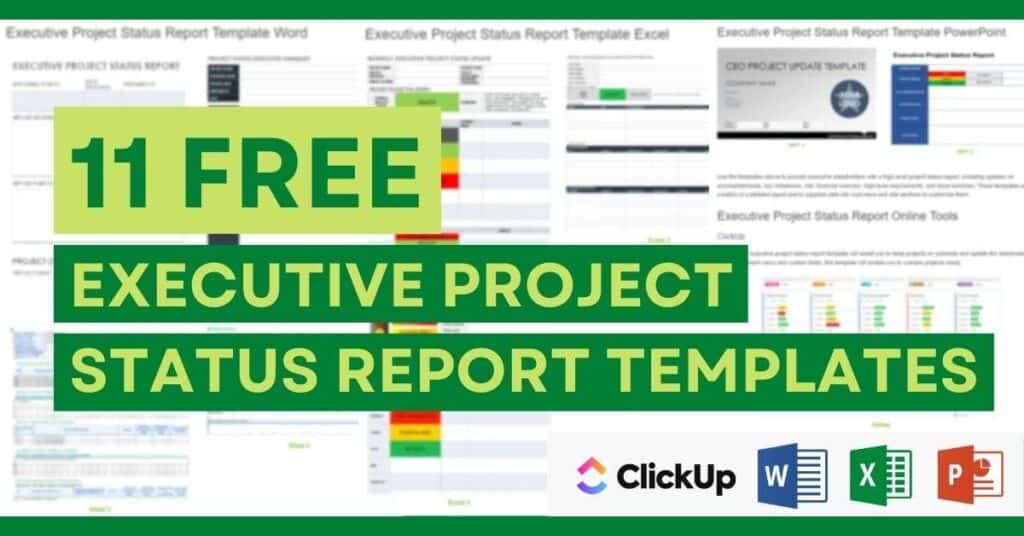
An executive project status report is a concise yet powerful one-page document that captures the current state of a project. It acts as a high-level snapshot, providing the most relevant information that senior stakeholders and C-suite executives need in order to quickly assess whether a project is on track, at risk, or falling behind. Unlike detailed progress reports that focus on daily updates, an executive status report highlights the bigger picture, offering insights into milestones achieved, key challenges, risks, and overall project health.
Its purpose is not just to inform but to support decision-making by presenting data in a clear, structured, and actionable way. By summarizing events and outcomes, the report demonstrates how the project is delivering value, ensuring alignment between project teams and leadership while keeping everyone focused on strategic goals.
Executive Project Status Report vs Project Progress Report
An executive project status report provides stakeholders with a comprehensive view of the project, covering time, budget, risks, dependencies, and performance against baselines. It offers a high-level snapshot of overall project health, enabling informed decisions. In contrast, a progress report is more focused, highlighting the specific progress made since the last update, tracking incremental achievements and changes.
Benefits of an Executive Project Status Report
The biggest challenge in project management is providing a comprehensive, up-to-date overview of an entire project. Without a holistic and accurate view, business leaders will have blind spots about the project’s current status, which can lead to ineffective decision-making. An effective executive project status report helps to overcome this challenge by providing several key benefits. You can:
- Use real-time data to keep stakeholders aligned on project status
- Track project health to identify bottlenecks and risks
- Remain reactive and agile as you identify problems promptly
- Provide context and clarity for the team and around other roles
- Enhance the accessibility and give people the information they need to make decisions
- Reduce the number of meetings and provide data for people to check when available
- Reduce manual work and save time by reducing data gathering for projects from other places
When Should You Update Your Executive Project Status Report
When you should share the executive project status report depends on your specific project. For example, if the project is moving fast and has short-term milestones, you should share the executive project status report weekly. However, if your project is moving slowly and has long-term objectives over a long timeline, the best way is to send monthly reports to keep the stakeholders updated.
Whatever frequency you choose, the important thing is to keep stakeholders informed about the project’s health, regardless of whether the project is on track or off track. You can also use a reporting tool to set reminders and create reports each month or week.
Executive Project Status Report Template Word
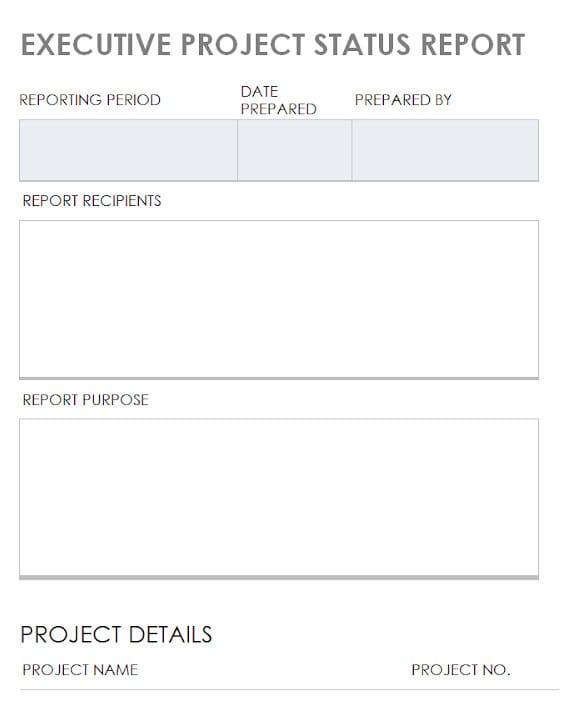
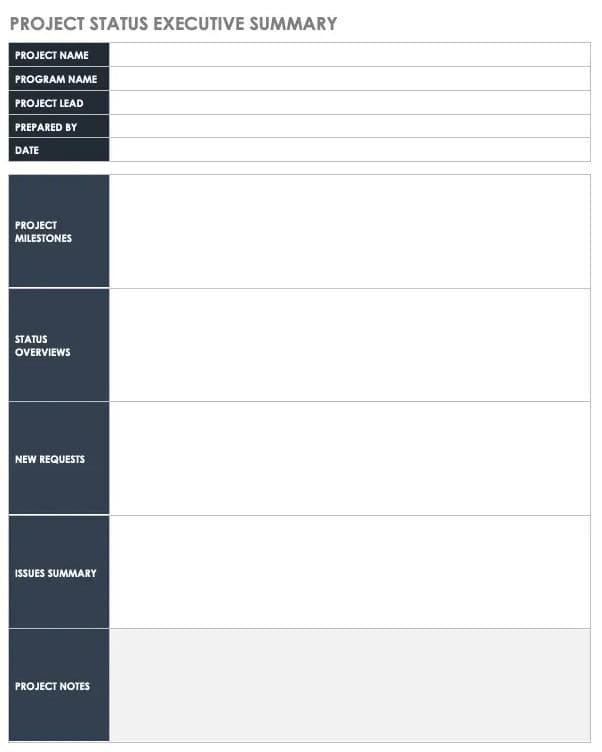
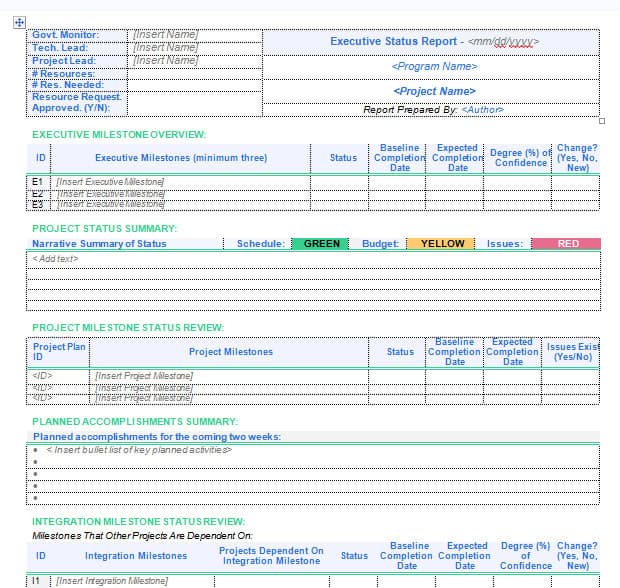
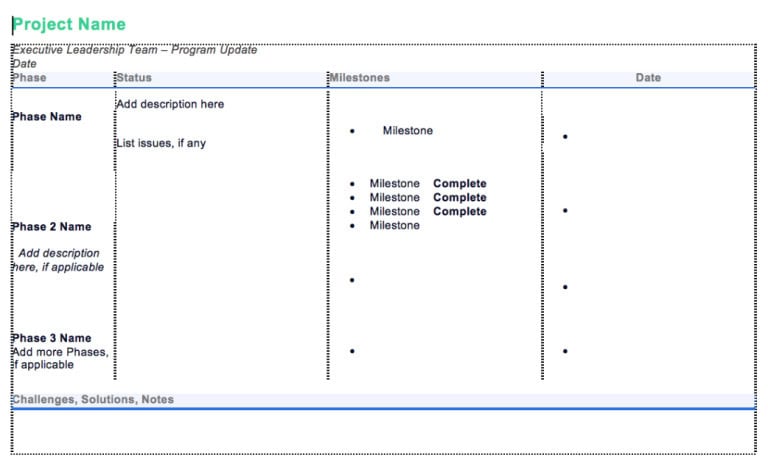
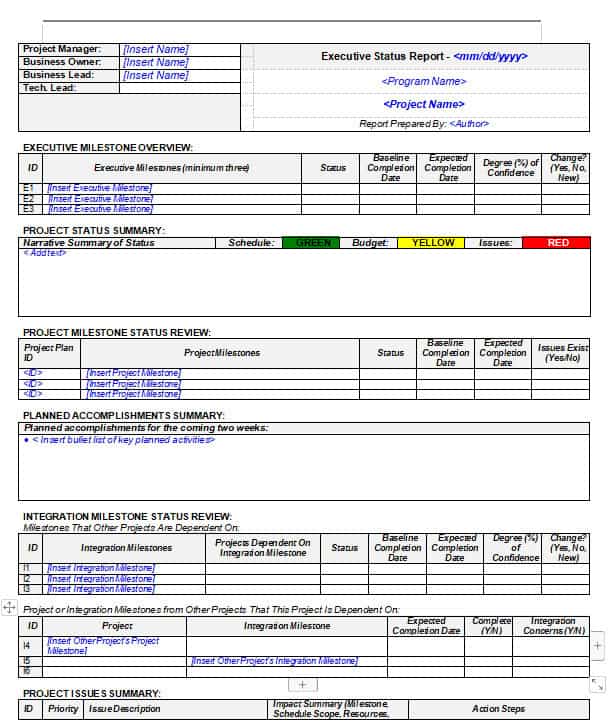
Executive Project Status Report Template Excel
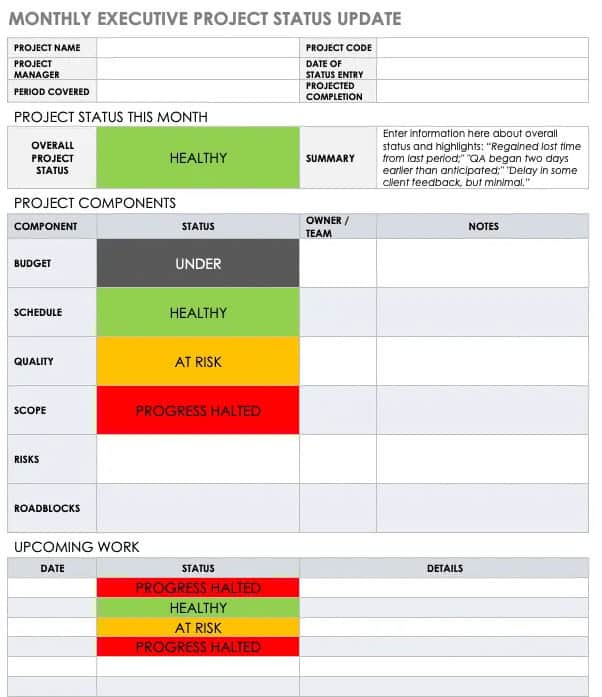
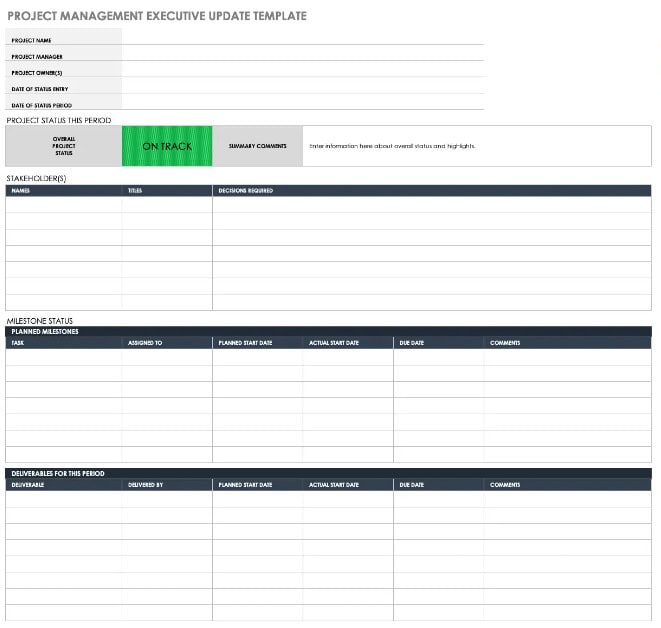
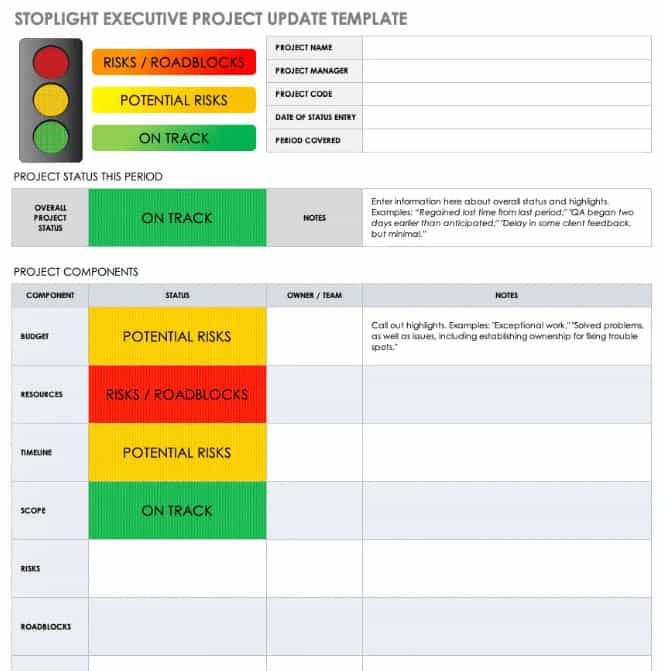
Executive Project Status Report Template PowerPoint
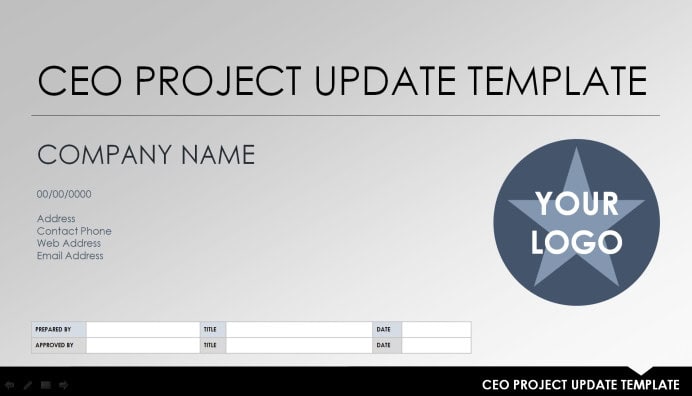
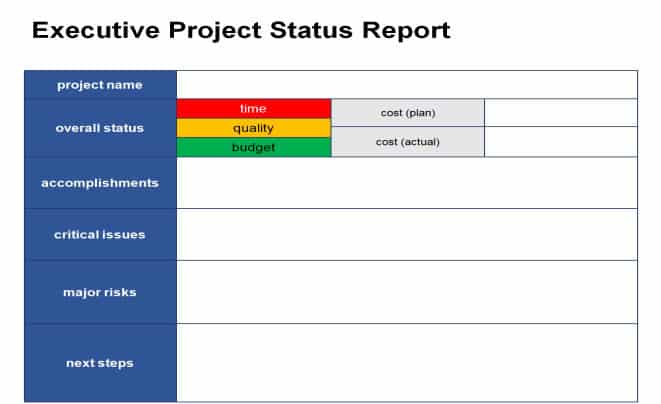
Use the templates above to provide executive stakeholders with a high-level project status report, including updates on accomplishments, key milestones, risk, financial overview, high-level requirements, and issue summary. These templates allow the creation of a detailed report and organizing data into overviews, and add sections to customize them.
Executive Project Status Report Online Tools
ClickUp
The ClickUp executive project status report template helps you keep projects on schedule while keeping stakeholders updated with clarity. With multiple views, dashboards, and customizable fields, it simplifies oversight and ensures nothing is overlooked. This template makes monitoring progress, tracking milestones, and identifying risks far easier, giving managers and executives confidence in project direction and overall health.
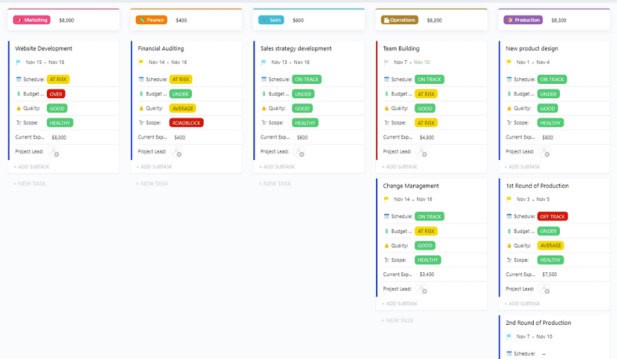
Best Practices for Writing an Effective Executive Project Status Report
Here are some of the best practices to create an executive project status report:
Visualize Your Reports
Images, charts, and infographics make reports easier to absorb than walls of text. Executives don’t want to decode spreadsheets—they want clarity. Incorporating visual tools like pie charts, bar graphs, timelines, and even mind maps gives stakeholders a quick understanding of progress and risks. Effective visualization ensures critical points are spotted instantly, making your report more engaging, actionable, and impactful.
Automate The Status Reports
Manual reporting wastes time and invites errors. Project management software can automatically compile status data, update progress, and provide real-time visibility into tasks and milestones. Automation helps managers monitor projects on the go, eliminates repetitive work, and ensures accuracy. It also creates consistency across reports, making it easier for stakeholders to spot trends, track performance, and get reliable insights without waiting for manual updates.
Build Custom Reports
Different audiences need different levels of detail. Executives may only care about progress toward business goals, while project teams want specific metrics. Tailoring reports ensures stakeholders get what matters most to them. Customization helps eliminate irrelevant data, keeps attention on priorities, and builds trust. The ability to adapt reporting style, format, and level of detail to each audience makes your updates more persuasive and effective.
Don’t Get Lost In Details
Executives don’t have time to read lengthy documents stuffed with every project update. They want the big picture—milestones achieved, risks ahead, and next steps. Focus on clarity and brevity. Summarize progress in digestible sections that highlight results, not just activity. By cutting out clutter and zeroing in on relevant points, you keep stakeholders engaged and ensure that they actually read and act on your report.
Executive Summary
An executive summary is the gateway to your report. It should highlight the project’s status, critical risks, completed milestones, and upcoming priorities in a concise snapshot. Executives rarely have time to dig into full details, so your summary must be punchy yet comprehensive. Including clear recommendations or action points helps decision-makers respond quickly. A strong summary can make or break whether your report gets read.
Use Dashboards
Dashboards give real-time visibility into a project’s health. Instead of waiting for reports, stakeholders can check progress anytime and track critical KPIs. Dashboards help managers stay proactive, anticipate risks, and address issues before they escalate. For executives, they provide transparency and reassurance that projects are under control. A well-designed dashboard builds confidence, fosters accountability, and reduces the need for frequent manual updates or long meetings.
Final Takeaway
An executive project status report is more than a formality—it is a vital communication tool that ensures projects stay aligned with business goals. By providing stakeholders with high-level insights into progress, risks, budgets, and timelines, these reports eliminate blind spots and strengthen decision-making. Whether created in Word, Excel, PowerPoint, or using online tools, the goal remains the same: clarity, accountability, and actionable information.
Following best practices like using visuals, automating updates, and tailoring reports for your audience ensures the information is both digestible and impactful. When done correctly, an executive project status report reduces confusion, saves time, and helps everyone remain focused on successful delivery. Ultimately, it becomes the backbone of effective project management and stakeholder trust.
Executive Project Status Report FAQs
What important details should be included in an executive project status report?
An executive project status report should include a concise project summary, activities completed, issues faced, and how these challenges may affect resources, costs, quality, and deadlines. Highlight risks, completed milestones, and next steps to keep stakeholders fully informed.
What is the purpose of an executive project status report?
The purpose of an executive project status report is to communicate a project’s progress clearly and efficiently. It ensures decision-makers have quick access to key details, risks, and outcomes, enabling better alignment, accountability, and timely action on project priorities.
Who writes an executive project status report?
Executive project status reports are written by project managers to keep stakeholders informed about key milestones, risks, and progress. These reports provide a high-level snapshot of project transitions, ensuring stakeholders have clarity and visibility without needing to review detailed documentation.
What is the impact of the status report?
An executive project status report impacts decision-making by keeping stakeholders aligned on progress and risks. It ensures transparency, strengthens accountability, and helps teams proactively address challenges. Ultimately, these reports safeguard project goals, improve efficiency, and maintain stakeholder confidence throughout execution.
Suggested articles:
- 5 Free Project Status Report Templates
- Improving Project Status Reports with Visual Reporting
- Project Status Report Template for Project Managers
Shane Drumm, holding certifications in PMP®, PMI-ACP®, CSM, and LPM, is the author behind numerous articles featured here. Hailing from County Cork, Ireland, his expertise lies in implementing Agile methodologies with geographically dispersed teams for software development projects. In his leisure, he dedicates time to web development and Ironman triathlon training. Find out more about Shane on shanedrumm.com and please reach out and connect with Shane on LinkedIn.